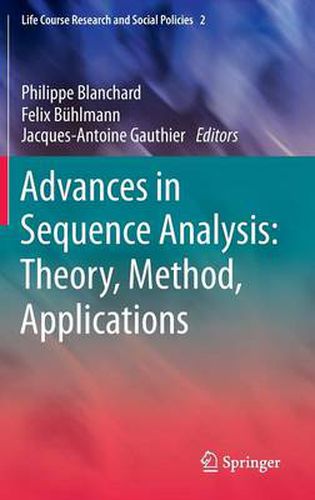Readings Newsletter
Become a Readings Member to make your shopping experience even easier.
Sign in or sign up for free!
You’re not far away from qualifying for FREE standard shipping within Australia
You’ve qualified for FREE standard shipping within Australia
The cart is loading…






This title is printed to order. This book may have been self-published. If so, we cannot guarantee the quality of the content. In the main most books will have gone through the editing process however some may not. We therefore suggest that you be aware of this before ordering this book. If in doubt check either the author or publisher’s details as we are unable to accept any returns unless they are faulty. Please contact us if you have any questions.
This book gives a general view of sequence analysis, the statistical study of successions of states or events. It includes innovative contributions on life course studies, transitions into and out of employment, contemporaneous and historical careers, and political trajectories. The approach presented in this book is now central to the life-course perspective and the study of social processes more generally.
This volume promotes the dialogue between approaches to sequence analysis that developed separately, within traditions contrasted in space and disciplines. It includes the latest developments in sequential concepts, coding, atypical datasets and time patterns, optimal matching and alternative algorithms, survey optimization, and visualization.
Field studies include original sequential material related to parenting in 19th-century Belgium, higher education and work in Finland and Italy, family formation before and after German reunification, French Jews persecuted in occupied France, long-term trends in electoral participation, and regime democratization.
Overall the book reassesses the classical uses of sequences and it promotes new ways of collecting, formatting, representing and processing them. The introduction provides basic sequential concepts and tools, as well as a history of the method. Chapters are presented in a way that is both accessible to the beginner and informative to the expert.
$9.00 standard shipping within Australia
FREE standard shipping within Australia for orders over $100.00
Express & International shipping calculated at checkout
This title is printed to order. This book may have been self-published. If so, we cannot guarantee the quality of the content. In the main most books will have gone through the editing process however some may not. We therefore suggest that you be aware of this before ordering this book. If in doubt check either the author or publisher’s details as we are unable to accept any returns unless they are faulty. Please contact us if you have any questions.
This book gives a general view of sequence analysis, the statistical study of successions of states or events. It includes innovative contributions on life course studies, transitions into and out of employment, contemporaneous and historical careers, and political trajectories. The approach presented in this book is now central to the life-course perspective and the study of social processes more generally.
This volume promotes the dialogue between approaches to sequence analysis that developed separately, within traditions contrasted in space and disciplines. It includes the latest developments in sequential concepts, coding, atypical datasets and time patterns, optimal matching and alternative algorithms, survey optimization, and visualization.
Field studies include original sequential material related to parenting in 19th-century Belgium, higher education and work in Finland and Italy, family formation before and after German reunification, French Jews persecuted in occupied France, long-term trends in electoral participation, and regime democratization.
Overall the book reassesses the classical uses of sequences and it promotes new ways of collecting, formatting, representing and processing them. The introduction provides basic sequential concepts and tools, as well as a history of the method. Chapters are presented in a way that is both accessible to the beginner and informative to the expert.